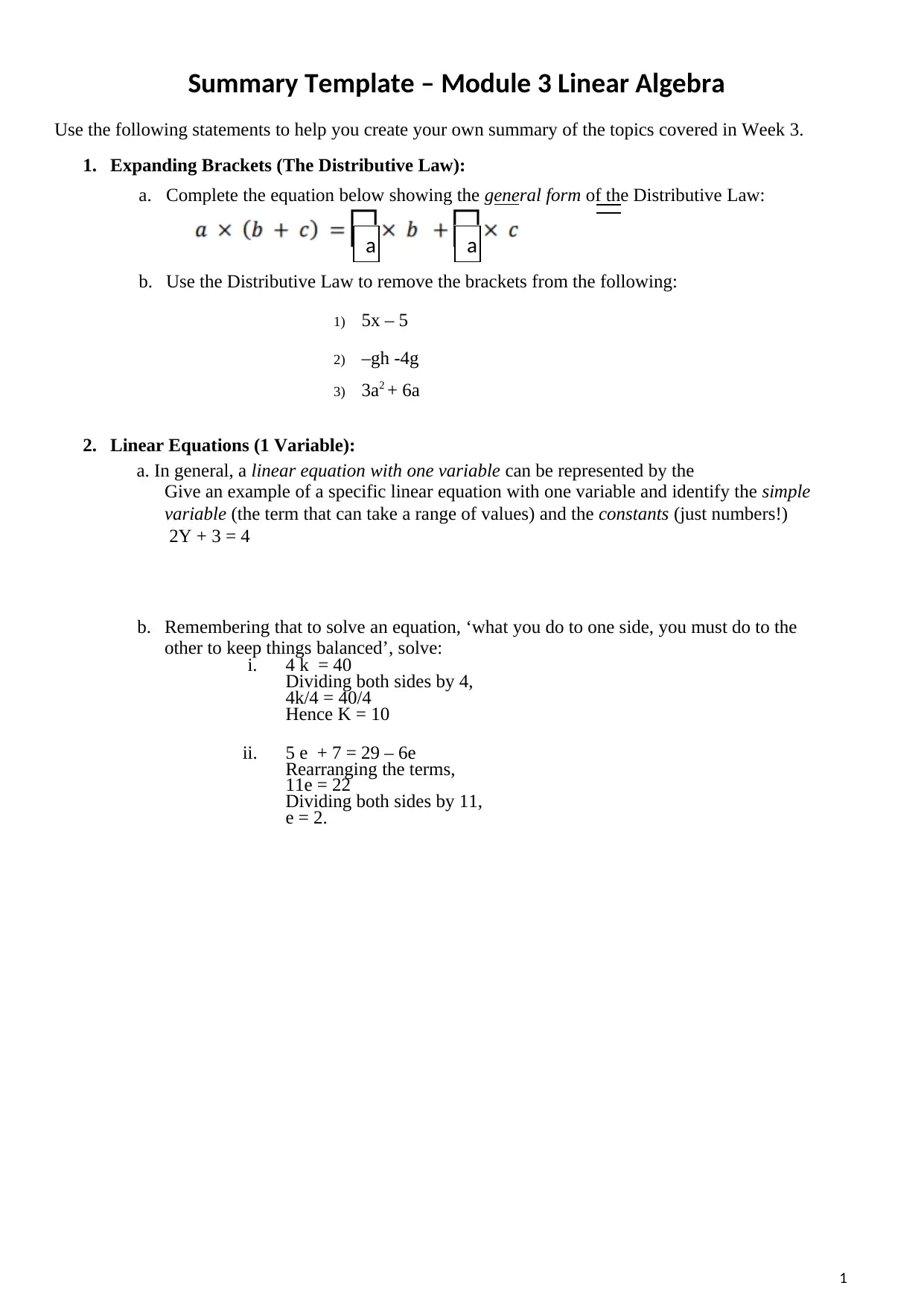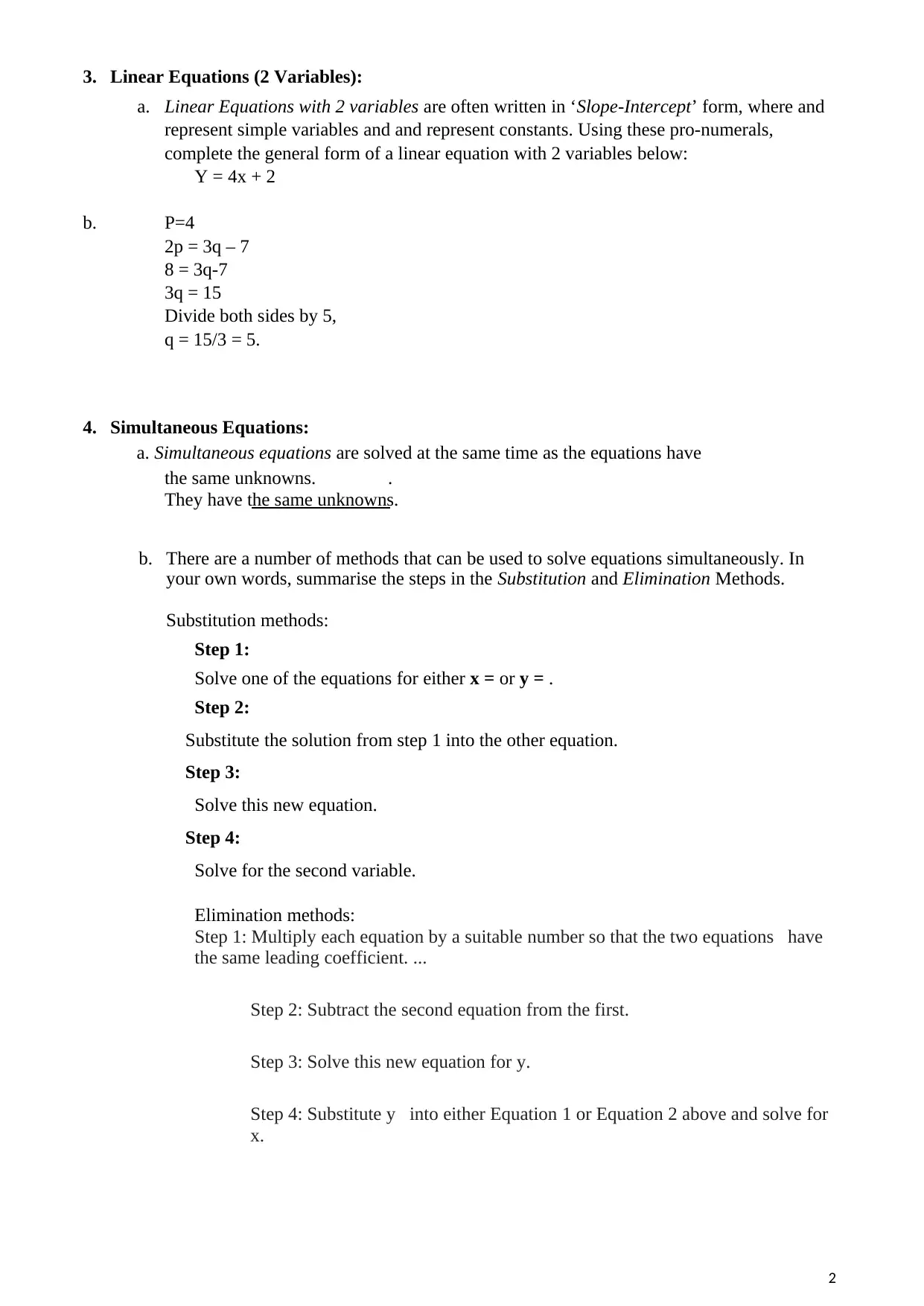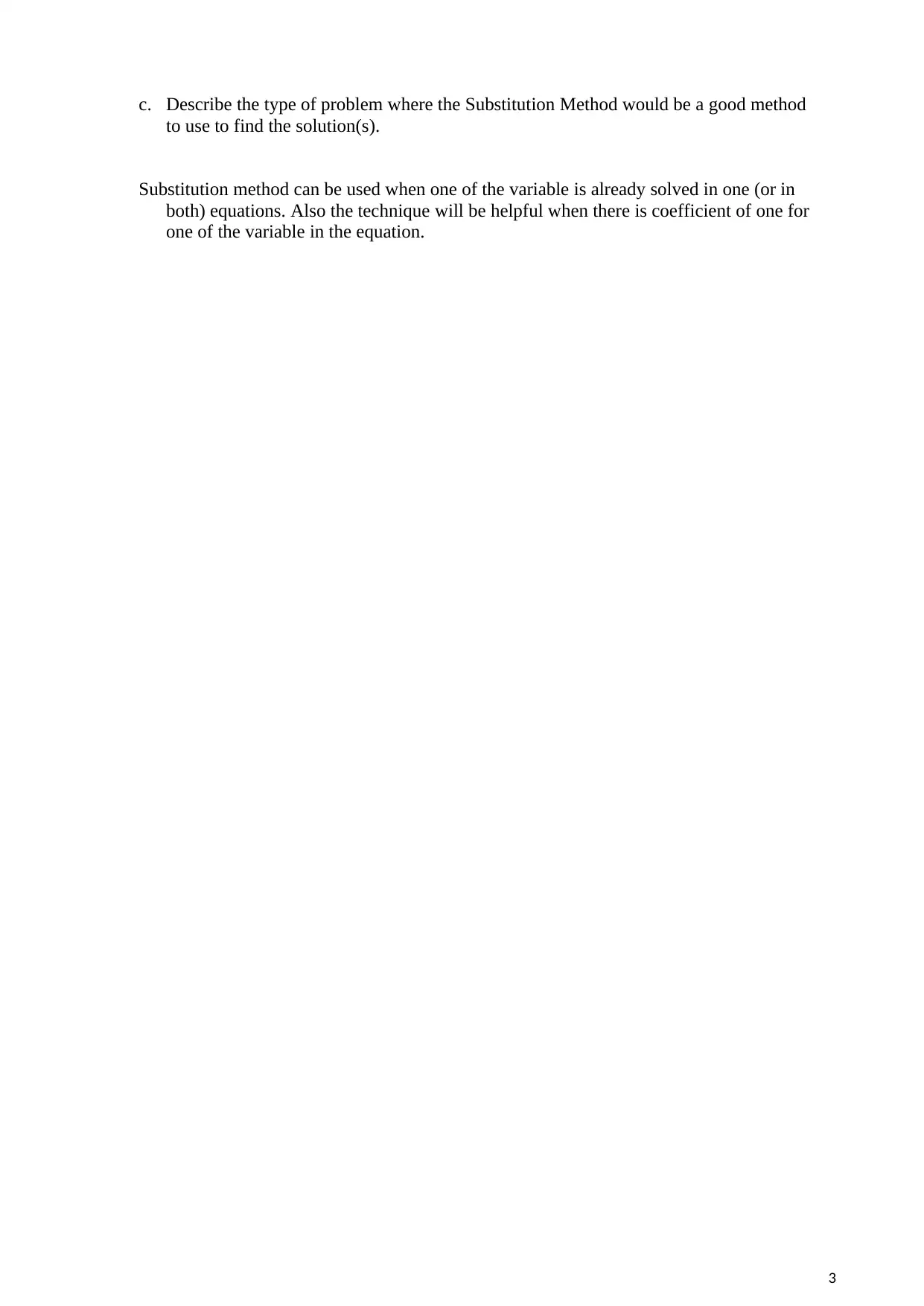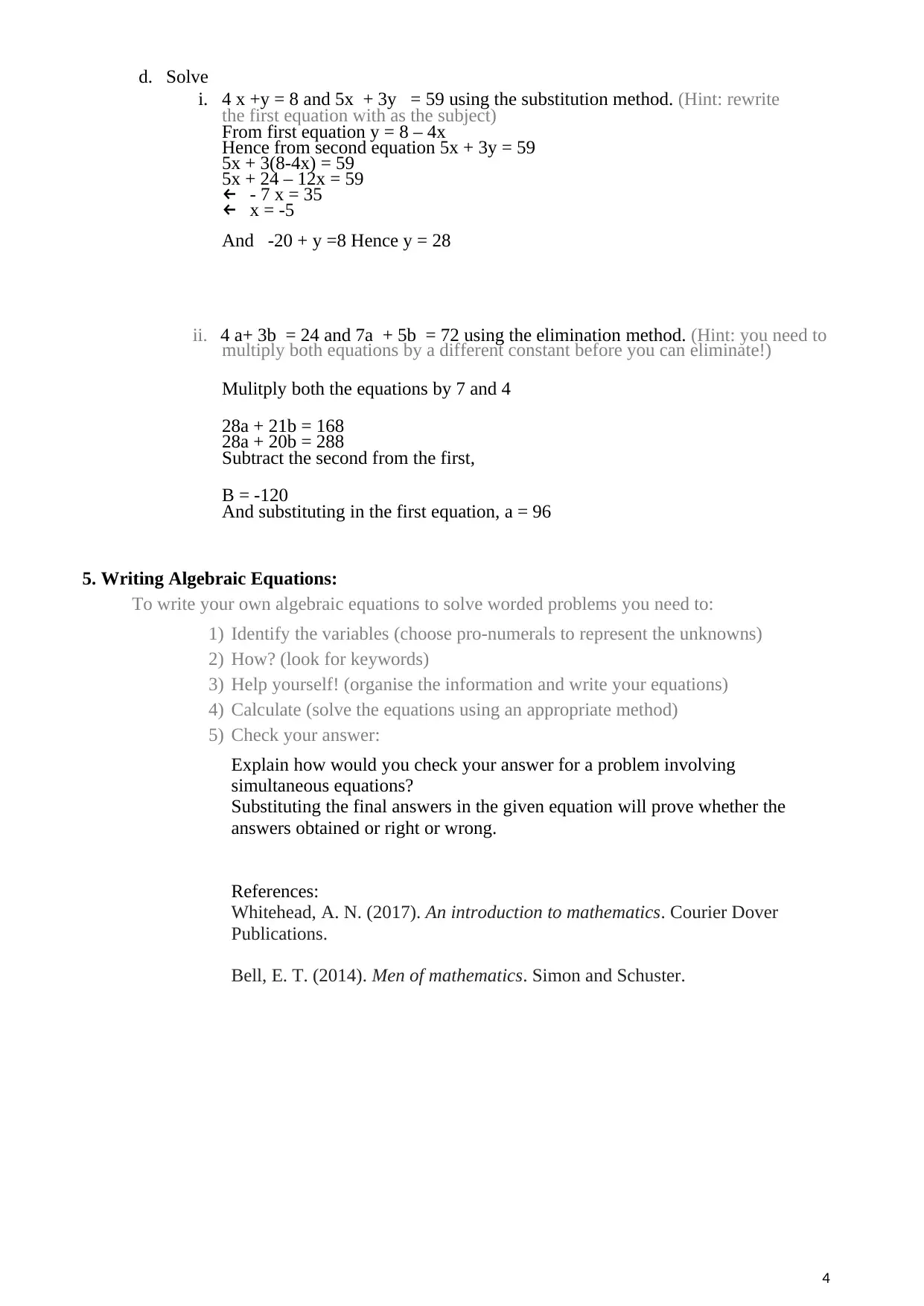Foundations of Mathematics: Linear Algebra Summary Template, Module 3
VerifiedAdded on 2021/04/24
|5
|862
|315
Homework Assignment
AI Summary
This assignment provides a summary of key concepts covered in Module 3 of a linear algebra course, focusing on foundational mathematical principles. It begins with a review of expanding brackets using the distributive law, followed by an exploration of linear equations with one and two variables, including slope-intercept form. The assignment delves into simultaneous equations, explaining both substitution and elimination methods, detailing the steps involved and the types of problems where each method is most applicable. Students are prompted to solve simultaneous equations using both methods. Finally, the summary covers writing algebraic equations from worded problems, emphasizing the importance of identifying variables, using keywords, organizing information, and checking answers through substitution. References to relevant mathematical texts are also included, providing a basis for further study and exploration of the topics discussed.
1 out of 5












![[object Object]](/_next/static/media/star-bottom.7253800d.svg)